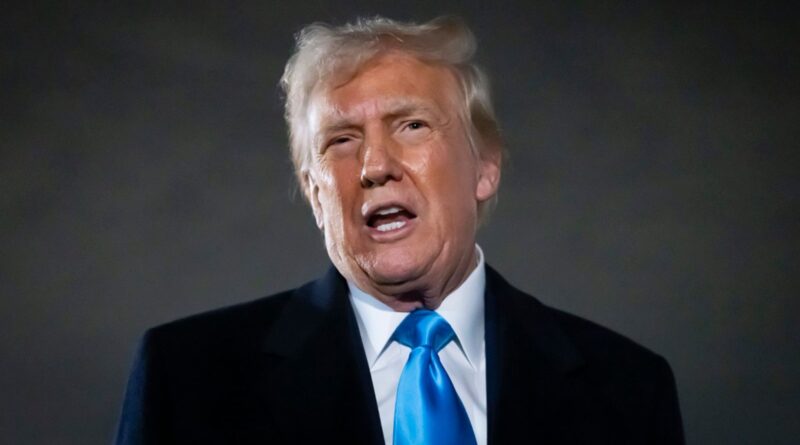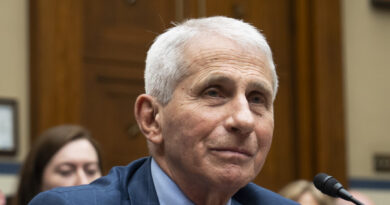Understanding Donald Trump’s Tariffs: Current Developments and Their Implications | US News
Donald Trump has enacted extensive tariffs affecting Mexico, Canada, and China, initiating a trade conflict that is poised to influence global markets.
Let’s examine the specifics of these tariffs and their implications worldwide:
What are the tariffs?
The President of the United States has announced that imports from Mexico and Canada will incur a 25% tariff, while a 10% levy will be applied to goods from China.
Canadian energy resources, including oil, natural gas, and electricity, will be taxed at a rate of 10%.
Trade war latest: Follow live updates
The tariffs are anticipated to go into effect on Tuesday, with both Mexico and Canada announcing their own counter-tariffs.
Mr Trump has also hinted at future measures, indicating that tariffs on the European Union could be enacted “pretty soon”.
When asked about the UK, the president remarked that Britain was “out of line” regarding trade but expressed that a resolution could be achieved without tariffs.
What are tariffs, and how do they work?
In simple terms, tariffs are taxes imposed on imported goods from other countries.
By increasing the cost of imports, tariffs aim to safeguard domestic producers by making local products more affordable.
Contrary to Mr Trump’s claims, it is not foreign nations that bear the cost of tariffs, but rather the importing businesses purchasing the goods.
For example, US retailers like Walmart or Target pay these tariffs directly to the US treasury.
In the US, these tariffs are collected by customs and border protection officers, stationed at 328 ports across the country.
To offset tariffs, companies usually increase their prices, resulting in consumers paying more for products.
Tariffs can also harm foreign economies by making their goods more expensive and less competitive.
This may lead to price cuts from producers (compromising their profits) as they attempt to maintain their market share in the US.
Why is Trump pursuing this course?
Mr Trump posits that imposing increased tariffs will aid in curbing illegal immigration and the trafficking of the synthetic opioid fentanyl into the US.
Regarding Mexico, he asserts that drug traffickers and the government share an “intolerable alliance” that threatens national security.
He further claims that Mexican drug cartels have reached into Canada.
On China, he accused the government of offering a “safe haven” for criminal organizations.
He has also committed to utilizing tariffs to enhance domestic manufacturing.
“We might face some minor short-term discomfort, which people understand. But, in the long run, the United States has been taken advantage of by nearly every country globally,” he stated.
His strategy appears aimed at compelling these nations to exert greater effort to combat illegal immigration and the smuggling of fentanyl. However, whether or not they comply, it may still advantage US manufacturers.
What could the fallout be?
Mexico and Canada are among America’s top trading partners, with the tariffs disrupting long-established trade ties.
Goods most likely to be impacted by the new tariffs include fruits and vegetables, gasoline and oil, automobiles and parts, and electronic goods.
Recent analysis from the Yale University Budget Lab indicates that the average American household could see a drop equivalent to $1,170 USD (£944) in income due to the tariffs.
Read more: How US consumers will be affected
The analysis further indicates that economic growth may decline and inflation could rise as a result of higher prices induced by tariffs.
Immediate effects were seen on Monday morning, as Asian market shares fell sharply.
Japan’s Nikkei index dropped by 2.9%, with Australia’s benchmark dropping 1.8%, often viewed as a barometer for Chinese markets. Stocks in Hong Kong, which include listings of Chinese enterprises, declined by 1.1%.
In the UK, stocks saw a notable drop, with the FTSE 100 index, which lists the most significant firms on the London Stock Exchange, falling over 1.3% at the start of trading.
European markets opened sharply lower, with the euro depreciating by 1.3%. The Stoxx 600, an index covering companies across Europe, fell by as much as 1.5%.
Additionally, the Mexican peso plummeted to its lowest level in nearly three years.
‘A very troubling direction’
Sky News’ data and economics editor Ed Conway noted that the long-term impact of a trade conflict is that “everyone suffers economically”, reminiscent of events prior to World War Two.
“As nations experience economic hardship, frustration mounts, leading to rising nationalism,” Conway warned during a recentSky News Daily podcast.
“This pattern mirrored the events of the 1930s, culminating in global conflict. It’s a daunting trajectory we may be on.”
However, Conway pointed out that one potential benefit of Mr Trump’s tariffs could be illuminating “significant imbalances” within the global economy.
He suggested that Mr Trump might steer the discussion towards issues that “economists typically avoid discussing”.
👉 Follow Trump 100 on your podcast app 👈
“Currently, we are dealing with a dysfunctional global economy,” he explained.
“There are enormous imbalances such as trade deficits [where a country imports more than it exports] and trade surpluses [where a country exports more than it imports] that need addressing.
“A more collaborative approach might yield a better solution to align our economic interests and prevent these imbalances moving forward.
“Tariffs could act as a catalyst for achieving this objective.”
How has the global community responded?
Canadian Prime Minister Justin Trudeau has fiercely opposed Mr Trump’s tariffs, announcing that his country will enforce 25% tariffs on $155 billion CAD (£85.9 billion) worth of US imports in retaliation.
He further stated that this action would drive a wedge between the two nations and urged Canadians to prioritize domestic products over American ones.
Mexican President Claudia Sheinbaum expressed on X that she had directed her economy minister to implement both tariff and non-tariff measures to protect Mexico’s interests.
She asserted that her government “categorically rejects” the assertion of any criminal alliances and called on the White House to tackle drug sales in its major cities.
Meanwhile, China has asserted that the actions of the US contravene World Trade Organization (WTO) regulations and plans to present a case before the governing body of international commerce.
China also warned it would take “necessary countermeasures to defend its legitimate rights and interests”.
A spokesperson for the UK government reaffirmed that the US is an “indispensable ally” and one of the UK’s “closest trading partners”.
They added that the trading relationship is “fair and balanced,” following Mr Trump’s remarks about the UK being “out of line”.
European Union (EU) leaders have also condemned the impending US tariffs.
Kaja Kallas, the EU’s chief foreign policy representative, stated there are “no winners” in a trade war, suggesting that if the US and Europe initiate hostile actions, it would result in benefits for China.
German Chancellor Olaf Scholz indicated that the EU has the resilience to “respond to tariffs with our own tariffs”, while French President Emmanuel Macron asserted that the US’s declarations are pushing Europe to become “stronger and more united”.
What is the history of trade wars?
Implementing tariffs is not a new strategy for Mr Trump, or for the US in general.
Throughout his first term, he enacted higher tariffs on imports from China and Vietnam.
In 2018, he applied 25% tariffs on imported steel and 10% tariffs on imported aluminum from most countries, asserting they were necessary due to the adverse effects of Chinese steel on the US steel industry.
In retaliation, China imposed tariffs on US goods, including 15% on 120 American products such as fruits, nuts, and steel pipes, as well as a 25% tariff on US pork and recycled aluminum.
Prior to that, President Jimmy Carter banned the sale of wheat to Russia, a prohibition that lasted until Ronald Reagan lifted it in 1981.
Read more:
Economic consequences could be just the beginning for Trump
Trump shifts focus of tariffs toward Mexico and Canada – reasons behind it
Toronto Raptors fans express discontent via booing U.S. anthem
In 2019, Mr Trump threatened tariffs as leverage to incentivize Mexico to clamp down on migrant crossings through its territory en route to the US.
A comprehensive analysis by economists from the Massachusetts Institute of Technology, the University of Zurich, Harvard, and the World Bank concluded that Mr Trump’s tariffs during his first term did not successfully restore jobs to the American manufacturing sector.
The tariffs “did not significantly alter US employment levels,” even though they were intended to offer job protection to American workers, according to Sky News’ US partner network, NBC News.










